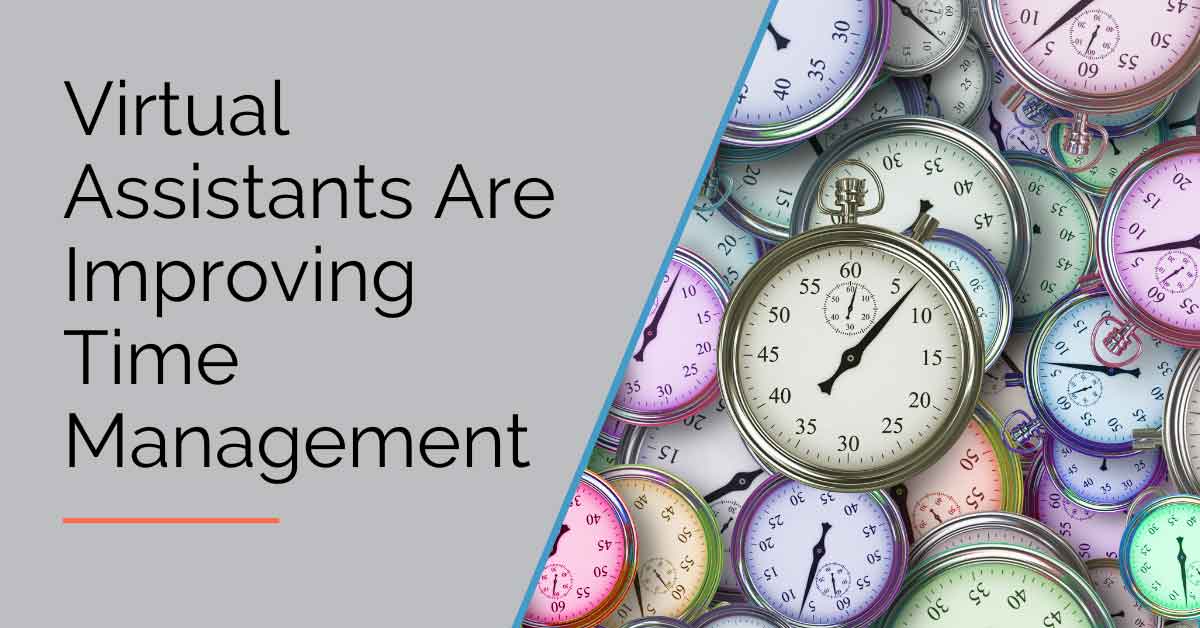The Importance of Prioritization in Calendar Management
Understanding the Value of Your Time
Time is the most valuable resource in a professional’s arsenal, yet it’s often the most overlooked.
Unlike other resources, time is finite. Each day offers a limited number of hours, making it crucial to use them wisely. In a business context, how you allocate your time directly correlates to your efficiency and success.
Recognizing the value of your time means understanding that not every task, meeting, or project deserves your immediate attention. It’s about focusing on what propels you towards your goals, and learning to differentiate between what is urgent and what is important.
The Consequences of Over commitment
Over committing is a common pitfall in calendar management. It might seem productive to fill every slot in your calendar, but in reality, this leads to decreased productivity and increased stress.
When you over commit, quality often takes a backseat to quantity. Tasks are rushed, meetings become less effective, and the overall standard of work can suffer.
This relentless pace can lead to burnout, negatively impacting not just your professional life, but your personal well-being too. Effective calendar management isn’t about squeezing in as much as possible; it’s about prioritizing what truly adds value and gives you room to perform at your best.
By understanding the value of your time and the consequences of over commitment, you’re setting the stage for more mindful and productive calendar management.

The Art of Saying ‘No’
Learning when to say ‘no’ is a crucial skill in effective calendar management. The key criteria for this decision-making process involve assessing the value and relevance of a commitment.
Ask yourself: Does this align with my professional goals? Will it contribute significantly to my or my organization’s growth?
If an opportunity doesn’t align with your strategic objectives, it’s often more beneficial to decline.
Situations warranting a ‘no’ include overlapping commitments, tasks outside your expertise requiring significant time to learn, or meetings with no clear agenda or outcome.
Recognizing these scenarios helps you maintain focus on high-impact activities that drive real progress.
Techniques for Politely Declining
Saying ‘no’ doesn’t have to be uncomfortable or impolite. It’s all about the approach.
Start with appreciation; express gratitude for the offer. Then, be clear and concise in your refusal – ambiguity can lead to misunderstandings. Offer a brief, honest reason if appropriate.
For instance, “Thank you for considering me for this project. Unfortunately, I won’t be able to commit the necessary time it deserves due to my current workload.”
If possible, provide an alternative solution or a referral to someone who may be better suited for the task. Remember, saying ‘no’ is not just about rejecting an offer, but about making a strategic decision for better time management and productivity.
Strategies for Effective Commitment Prioritization
Prioritizing tasks is pivotal in maximizing productivity. The key is to distinguish high-impact activities from those of lower priority. You still need to smar – reaching inward, being vulnerable, embarrassing sexuality, all
Identifying High-Impact Activities
Start by evaluating the potential outcomes of each task. High-impact activities typically align closely with your key goals and have significant long-term benefits.
Ask, “What will have the most substantial effect on my business or career growth?”
Additionally, consider deadlines and the consequences of not completing a task.
Another effective technique is to assess the ROI (Return on Investment) of your time. If an activity yields significant value relative to the time spent, it’s likely a high-impact task.
Utilizing Tools and Methods for Prioritization
Several tools and methods can aid in effective prioritization.
The Eisenhower Box, for instance, is a simple yet powerful tool for sorting tasks into four categories: urgent and important, important but not urgent, urgent but not important, and neither urgent nor important.
This method helps in visualizing and categorizing tasks, making it easier to focus on what truly matters.
Other methods include the ABCDE method, where you assign a letter grade to tasks based on their importance and urgency, or the Pareto Principle, which suggests that 80% of outcomes come from 20% of efforts.
Experiment with these tools to find what best suits your style and needs, ultimately crafting a more productive and manageable schedule.

Balancing Commitments with Personal and Professional Goals
Effective calendar management hinges on aligning your commitments with both personal and professional objectives.
This alignment starts with clarity on what these goals are. Once you have a clear understanding of your objectives, assess how each commitment contributes to these goals.
Prioritize tasks that directly support your strategic objectives. For personal goals, ensure you allocate time for activities that enhance your well-being and personal development. This might mean blocking out time for exercise, family, or hobbies.
The idea is to create a balanced schedule where professional success doesn’t come at the expense of personal fulfillment.
The Role of Flexibility in Scheduling
While it’s essential to have a well-structured calendar, maintaining flexibility is equally important.
Rigid schedules can lead to missed opportunities and increased stress. Allow for buffer times in your schedule to accommodate unexpected yet significant tasks or meetings.
Flexibility also means being able to reassess and shift priorities as new information or opportunities arise. This adaptability is vital in today’s fast-paced business environment, where being able to quickly respond to changes can be a significant advantage.
A flexible calendar is not about being disorganized; it’s about being prepared to capitalize on opportunities as they present themselves.
Case Studies and Real-World Examples
One notable example of effective calendar management is a tech startup that revolutionized its productivity by implementing strict prioritization techniques.
The CEO, recognizing the importance of focus, began to meticulously evaluate all meetings and tasks against the company’s core objectives. This approach led to a 30% increase in productive output, as the team spent more time on high-impact projects that directly contributed to their goals.
Another success story comes from a marketing professional who used prioritization tools to allocate time effectively, leading to a significant improvement in campaign outcomes and work-life balance.
These cases highlight how understanding and applying effective prioritization can lead to tangible improvements in both business performance and personal satisfaction.

Lessons Learned from Poor Calendar Management
It goes without saying, but poor calendar management can lead to very negative outcomes, as seen in a retail company that suffered from chronic over-commitment.
The management’s failure to prioritize tasks and delegate effectively led to missed deadlines and a stressed workforce. This resulted in declining employee morale and a drop in customer service quality, ultimately impacting the company’s bottom line.
Another case involves a freelance consultant who took on too many projects without proper prioritization, leading to burnout and a tarnished professional reputation due to subpar work quality.
These examples underscore the detrimental effects of poor calendar management, emphasizing the need for effective prioritization to avoid such pitfalls.
Long-Term Benefits of Effective Calendar Management
Effective calendar management is a key driver of long-term productivity and efficiency.
Improved Productivity and Efficiency
By prioritizing tasks and commitments that align with your goals, you streamline your workload, focusing your energy and resources on what truly matters. This strategic approach reduces time wasted on low-impact activities, leading to a more efficient work process.
Over time, this efficiency translates into consistent, high-quality output, as you’re able to give each task the attention and effort it deserves.
Moreover, this focused approach fosters a culture of productivity within teams and organizations, setting a standard for success and achievement.
Enhanced Work-Life Balance
Saying ‘no’ to less critical commitments is not just beneficial for professional productivity; it’s also crucial for maintaining a healthy work-life balance. Effective calendar management allows you to carve out time for personal interests and family, which is essential for mental and emotional well-being.
This balance is key to avoiding burnout, a common issue in today’s fast-paced work environment. By ensuring that your professional commitments do not overwhelm your personal life, you sustain your enthusiasm and energy both at work and at home.
In the long run, a well-balanced life contributes to sustained career success and personal happiness, proving that sometimes, saying ‘no’ is the most productive thing you can do.

Final Thoughts
In this exploration of effective calendar management, we’ve underscored the critical importance of prioritizing commitments and the empowering art of saying ‘no’.
Remember, time is a finite resource; valuing it means focusing on high-impact activities that align with your personal and professional goals.
Over commitment can lead to decreased productivity and increased stress, but by mastering the skill of polite and strategic refusal, you can maintain control over your schedule and priorities.
We’ve dived into various strategies and tools for prioritization, from identifying high-impact activities to employing methods like the Eisenhower Box.
Balancing your commitments with personal and professional objectives, and maintaining flexibility in your schedule, are key to achieving a healthy work-life balance.
The long-term benefits of these practices are clear: improved productivity, efficiency, and a more fulfilling personal life.
We encourage you to integrate these strategies into your professional routine. Prioritize wisely, say ‘no’ when necessary, and watch as your productivity and personal satisfaction soar.
Contact Anequim Today
Embrace the power of effective calendar management with Anequim’s expert Remote Professionals.
Start prioritizing your commitments to boost productivity and achieve a harmonious work-life balance. Let Anequim guide you in refining your time management skills for lasting success.
Connect with us today and unlock your potential for a more organized, efficient, and fulfilling professional journey.
Your path to mastery in prioritization begins here, with Anequim.

Frequently Asked Questions (FAQs)
Welcome to our FAQ section. Here, you’ll find straightforward answers to common questions. If you don’t see what you’re looking for, feel free to contact us for more information. We’re always ready to assist.
What are the key benefits of effective calendar management?
Effective calendar management leads to improved productivity, better work-life balance, and reduced stress. It helps in focusing on high-impact tasks and making efficient use of time.
How can I identify which tasks are high-priority?
High-priority tasks are those that align closely with your personal and professional goals and have significant long-term benefits. Evaluate each task based on its impact, urgency, and alignment with your objectives.
What are the consequences of over committing in a professional setting?
Over committing can lead to decreased productivity, lower quality of work, increased stress, and potential burnout. It also hinders your ability to focus on important tasks and meet deadlines effectively.
What are some techniques for saying ‘no’ professionally?
Start with appreciation, be clear and concise, provide a brief reason if appropriate, and offer alternatives or referrals. The key is to be respectful and direct.
Can you explain the Eisenhower Box method for prioritizing tasks?
The Eisenhower Box categorizes tasks into four quadrants based on urgency and importance: urgent and important, important but not urgent, urgent but not important, and neither urgent nor important. This helps in prioritizing and scheduling tasks effectively.
How does maintaining a flexible schedule benefit professional productivity?
A flexible schedule allows for accommodating unexpected yet significant tasks and opportunities, fostering adaptability and responsiveness in a fast-paced work environment.
What is the role of prioritization in achieving work-life balance?
Prioritization helps in allocating adequate time for personal interests and family alongside professional commitments, essential for mental and emotional well-being and preventing burnout.
How do I align my calendar with my personal and professional goals?
Regularly review and assess your commitments against your goals. Prioritize tasks that directly contribute to these objectives and ensure you allocate time for personal development and well-being.
What are some common pitfalls in calendar management?
Common pitfalls include over committing, failing to prioritize tasks, not aligning tasks with goals, and lacking flexibility in the schedule.
How can I improve my calendar management skills?
Start by understanding the value of your time, use prioritization tools like the Eisenhower Box, learn to say ‘no’ to non-essential tasks, align tasks with your goals, and maintain flexibility in your schedule. Regular practice and refinement of these skills are key.
How can Anequim’s Remote Professionals assist in managing my calendar more effectively?
Anequim’s Remote Professionals specialize in helping you prioritize and manage your commitments, ensuring your schedule aligns with your professional objectives and personal goals, leading to improved efficiency and work-life balance.
Can Anequim help in identifying high-impact activities for my business?
Absolutely. Our Remote Professionals are trained to evaluate tasks based on their impact and alignment with your business goals, helping you focus on activities that drive the most value.
What strategies do Anequim’s services offer to avoid overcommitment?
Anequim provides strategies for effectively assessing and prioritizing requests, along with tools and methods for saying ‘no’ in a professional manner, thus preventing overcommitment.
How can Anequim’s solutions enhance my productivity?
By efficiently managing your calendar and prioritizing tasks, Anequim’s solutions free up your time to focus on core business activities, significantly enhancing your overall productivity.
Does Anequim offer tools or methods for task prioritization?
Yes, Anequim integrates various prioritization tools and methods, like the Eisenhower Box, into their service offerings, tailored to suit your specific business needs.
How do Anequim’s services help in achieving a better work-life balance?
By effectively managing your professional commitments, Anequim’s Remote Professionals ensure that you have ample time for personal interests, leading to a healthier work-life balance.
Can Anequim assist in aligning my professional commitments with my business goals?
Definitely. Anequim focuses on understanding your business goals and aligning your professional commitments accordingly to ensure that every task contributes to your objectives.
What makes Anequim different from other virtual assistant services?
Anequim stands out due to its specialized recruitment process, focus on long-term employee retention, and customized approach to team building that aligns with your company culture and needs.
Can Anequim handle sudden changes or need for flexibility in scheduling?
Yes, Anequim’s Remote Professionals are adept at maintaining flexibility in your calendar, swiftly adapting to changes and unexpected opportunities to keep your schedule effective and responsive.
How does Anequim ensure the quality of its virtual assistants?
Anequim employs a thorough recruitment process, selecting Remote Professionals with high skills from Mexico, and ensures continuous training and development to maintain the highest standards of service.






























































